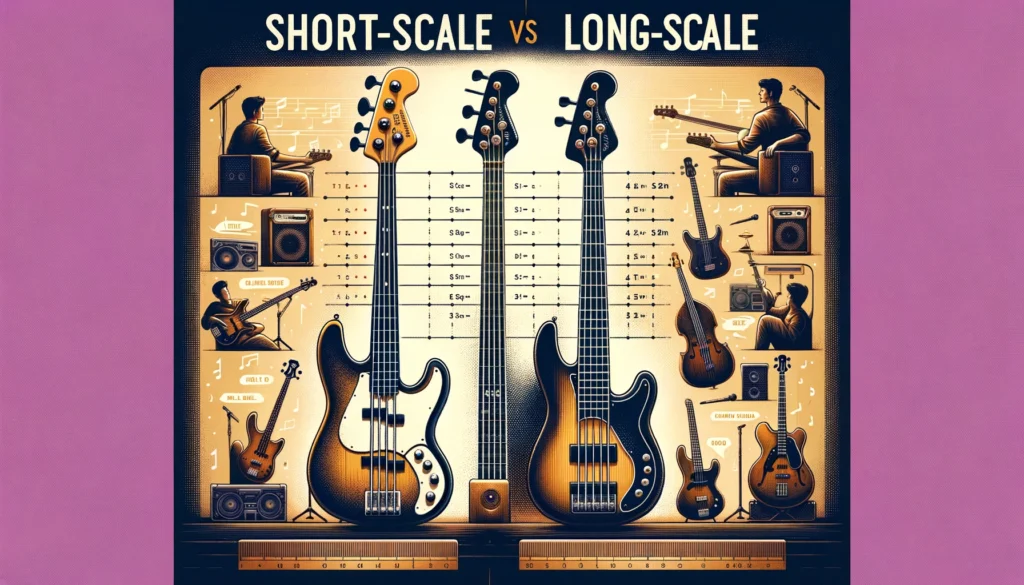
When it comes to choosing a bass guitar, one of the key considerations is the scale length – the distance between the bridge and the nut. This factor significantly influences the playability, tone, and overall feel of the instrument. Bass guitars generally fall into two main categories: short-scale and long-scale. Understanding the differences between these two types of basses can help you make a more informed decision about which is right for you.
- Scale Length Defined
- Short-Scale Bass: Typically, a short-scale bass has a scale length of less than 32 inches. The most common scale length in this category is around 30 inches.
- Long-Scale Bass: Also known as ‘standard’ scale, long-scale basses usually have a scale length of 34 inches or more.
- Playability
- Short-Scale Bass: The shorter scale length means the frets are closer together, which can be more comfortable for players with smaller hands or beginners. The reduced string tension also makes it easier to press the strings down.
- Long-Scale Bass: A longer scale length requires a bit more reach and finger stretching. The increased string tension can result in a firmer feel, which might be challenging for some players but beneficial for others, particularly those looking to develop stronger hand muscles.
- Tone and Sound
- Short-Scale Bass: These basses tend to have a warmer, more rounded tone. They are often noted for their pronounced midrange and a slightly ‘thumpy’ quality to the sound, which can be great for genres like classic rock, indie, or folk.
- Long-Scale Bass: Long-scale basses generally produce a tighter, more focused sound. They excel in clarity and sustain, making them a popular choice for genres that require crisp, articulate bass lines like jazz, funk, or progressive rock.
- String Tension and Tuning Stability
- Short-Scale Bass: The lower string tension can sometimes lead to issues with tuning stability and can affect the instrument’s ability to handle lower tunings without flabbiness.
- Long-Scale Bass: The higher tension on long-scale basses provides better tuning stability and allows for lower tunings while maintaining string tightness and clarity.
- Body Size and Weight
- Short-Scale Bass: Typically, these basses have smaller bodies, making them lighter and more comfortable to play, especially for extended periods or for younger players.
- Long-Scale Bass: The larger bodies can be heavier and might be less comfortable for some players, particularly during long gigs or sessions.
- String Selection
- Short-Scale Bass: There are fewer string options available for short-scale basses, but most major manufacturers do offer strings specifically designed for these instruments.
- Long-Scale Bass: There is a wider variety of strings available for long-scale basses, giving players more options to tailor their sound.
In conclusion, both short-scale and long-scale basses have their unique characteristics and advantages. The choice between them should be based on personal preference, playability, and the specific sound you’re looking to achieve. It’s always a good idea to try out both types to see which feels and sounds best to you.